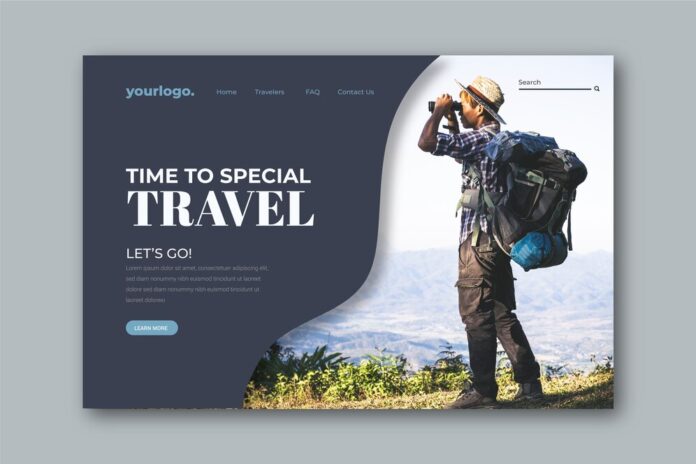In the world of web design, templates serve as the foundation upon which websites are built. They are pre-designed layouts or frameworks that define a website’s structure, style, and functionality. Templates streamline the web design process by providing a ready-made framework, saving designers and developers time and effort.
Understanding Templates
Templates are blueprints for web pages, consisting of various elements such as layout, typography, colour scheme, navigation menus, and placeholders for content. They come in different formats and styles, catering to diverse design preferences and requirements.
Importance of Templates in Web Design
Templates play a crucial role in web design for several reasons:
- They provide a starting point for designing websites, reducing the need to create everything from scratch.
- They ensure consistency and uniformity across website pages, enhancing user experience and brand identity.
- They expedite the design process, enabling designers to focus more on creative aspects and functionality than basic layout and structure.
Types of Templates
There are two main types of templates used in web design:
Pre-designed Templates
Pre-designed templates are ready-made layouts that are readily available for use. Professional designers typically create them, often sold or distributed through online marketplaces or template libraries.
Characteristics of Pre-designed Templates:
- They come in various styles and themes, catering to different industries and purposes.
- They are cost-effective and accessible to designers of all skill levels.
- They may have limited customization options, but they offer a quick and convenient solution for building websites.
Custom Templates
Custom templates are tailor-made designs explicitly created for a particular website or client. Unlike pre-designed templates, custom templates are built from scratch or based on specific design requirements and preferences.
Characteristics of Custom Templates:
- They offer greater flexibility and control over the design and functionality of a website.
- They are unique to each project, reflecting the brand identity and vision of the client.
- They may require more time and resources to develop compared to pre-designed templates, but they provide a bespoke solution tailored to individual needs.
Critical Elements of a Template
Regardless of the type, templates consist of several key elements that define the overall look and feel of a website:
- Layout: The arrangement of content elements such as headers, footers, sidebars, and primary content areas.
- Typography: The fonts, font sizes, and typography styles used for text content.
- Color Scheme: The selection of colors and color combinations that complement the brand and enhance visual appeal.
- Navigation: The structure and functionality of navigation menus, links, and buttons for easy site navigation.
- Images and Multimedia: The inclusion of graphics, photos, videos, and other multimedia elements to enhance visual interest and engagement.
How Templates are Used in Web Design
Templates serve as a starting point for web designers and developers to create and customize websites. The process typically involves the following steps:
- Selection Process: Choosing a suitable template based on the project requirements, budget, and design preferences.
- Customization and Personalization: Modifying the template to align with the brand identity, content strategy, and user experience goals.
- Integration with Content Management Systems (CMS): Implementing the template within a CMS platform such as WordPress, Joomla, or Drupal to efficiently manage and update website content.
![]()
Benefits of Using Templates
Using templates in web design offers several advantages:
- Time-saving: Templates streamline the design process, allowing designers to create websites more efficiently and meet tight deadlines.
- Cost-effective: Pre-designed templates are often more affordable than custom designs, making them ideal for budget-conscious projects.
- Consistency in Design: Templates ensure consistency across different website pages, maintaining a cohesive brand identity and user experience.
- Accessibility and Responsiveness: Many templates are designed to be responsive and accessible, providing optimal viewing experiences across various devices and screen sizes.
Challenges and Considerations
While templates offer numerous benefits, they also pose specific challenges and considerations:
- Limited Flexibility with Pre-designed Templates: Pre-designed templates may have limited customization options, making achieving a unique and personalized design challenging.
- Ensuring Uniqueness and Brand Identity with Custom Templates: Custom templates require careful planning and execution to accurately reflect the brand identity and differentiate the website from competitors.
Best Practices for Using Templates
To maximize the effectiveness of templates in web design, consider the following best practices:
- Choosing the Right Template for Your Website: Select a template that aligns with your brand, industry, and design goals.
- Customizing Templates to Fit Your Brand and Requirements: Personalize the template by adjusting colours, fonts, imagery, and layout to reflect your brand identity and meet user needs.
![]()
Conclusion
Templates are invaluable tools in web design, offering a convenient and efficient way to create visually appealing and functional websites. Whether you opt for pre-designed templates or custom designs, harnessing the power of templates can streamline the design process, save time and resources, and ensure consistency and professionalism in your web projects.
FAQs (Frequently Asked Questions)
Can I customize a pre-designed template to suit my brand’s unique style?
Yes, most pre-designed templates allow for customization, including color changes, fonts, and layout to align with your brand identity.
What are the advantages of using custom templates over pre-designed templates?
Custom templates offer greater flexibility and control over the design and functionality of your website, allowing you to create a unique and tailored solution that reflects your brand identity and meets specific requirements.
Are templates compatible with content management systems (CMS) like WordPress?
Templates facilitate seamless integration with popular CMS platforms, enabling users to easily access and update website content.
How can I ensure my website stands out if I’m using a pre-designed template?
To differentiate your website, customize the template to reflect your brand identity, incorporate unique content and imagery, and provide a seamless user experience.
What factors should I consider when choosing a template for my website?
When selecting a template, consider design aesthetics, functionality, responsiveness, ease of customization, and compatibility with your content and business goals.
-
You’ll also like this:
Must visit the home page:




